AI is transforming how we approach development. With generative AI, we can automate tasks, personalize customer experiences, and generate dynamic content. Nevertheless, with so many options for generative AI models and APIs, it can be challenging to know where to start. This article will introduce you to the best generative AI APIs right now for AI app development. You'll learn about their features, benefits, use cases, and pricing to help you decide on your next project.
One way to simplify this integration process is using Lamatic's generative AI tech stack. Our solution provides a modular framework for working with generative AI APIs. It allows you to start quickly to innovate faster and deliver more value to your customers.
What are Generative AI APIs?

Generative AI APIs allow developers to integrate AI capabilities into applications and websites. These pre-built interfaces use machine learning to produce new content like images, text, and audio. Instead of building complex AI systems from scratch, developers can call an API’s functions to access its pre-trained models.
With generative AI APIs, businesses can enhance applications with creative, intelligent features that improve user experiences.
Why Are Generative AI APIs Important?
Generative AI APIs can significantly reduce the time and costs of implementing artificial intelligence. According to a report by Gartner, by 2026, 30% of the demand for APIs will be driven by AI and tools utilizing large language models.
The report also notes that “AI will become a key part of almost every technology platform, tool, and application.” As developers integrate AI into their applications, they will inevitably turn to generative AI APIs to speed up this process.
Use Cases for Generative AI APIs
Generative AI APIs find applications in a wide range of industries and scenarios, including:
- Creative Media: Generate unique images, videos, music, and text for various creative projects.
- Data Augmentation: Enhance machine learning datasets by creating synthetic data with limited or sensitive original data.
- Product Development: Accelerate the design process with generative models that quickly propose numerous variations.
- Content Personalization: Tailor content to individual preferences and behaviors for a more engaging user experience.
The Benefits of Using AI APIs
Those who use AI APIs benefit in the following ways:
- Cost-Effective: Building systems that process data can be expensive as you may need GPUs and cooling systems. Machine Learning and AI developers are also costly to hire. AI APIs eliminate the need for extensive infrastructure and in-house AI expertise.
- Quick Integration: Modern organizations use many tools to boost productivity, track sales, or communicate. Developers of AI APIs recognize how critical such tools are in an organization’s everyday running, thus designing tools that are easy to integrate with existing systems.
- Access to Advanced Technology: All AI algorithms and models are not created equal. Technology is ever-evolving, and some models are superior to others. Some APIs, like Google Cloud API, provide access to cutting-edge AI models, such as AutoML Entity Extraction, for the healthcare sector.
- Scalability: Developers should consider an organization’s growing needs. Thus, adding computing or reducing computing power should be easy based on the needs without compromising quality. Most AI APIs have pay-as-you-go pricing models, which can handle growing data volumes and user demands.
- Enhanced Productivity: Organizations can utilize AI-powered features to automate tasks like content moderation or create chatbots. This allows developers to focus on other priorities.
Related Reading
- Fine Tuning AI Models
- Artificial Intelligence in Web Applications
- How to Integrate AI Into an App
- AI API Integration
- How to Fine Tune GPT
- How to Use AI in an App
- How to Integrate ChatGPT Into an App
- How to Integrate AI Into Smart Home Application
17 Best Generative AI API
1. Lamatic: The Managed Generative AI Tech Stack
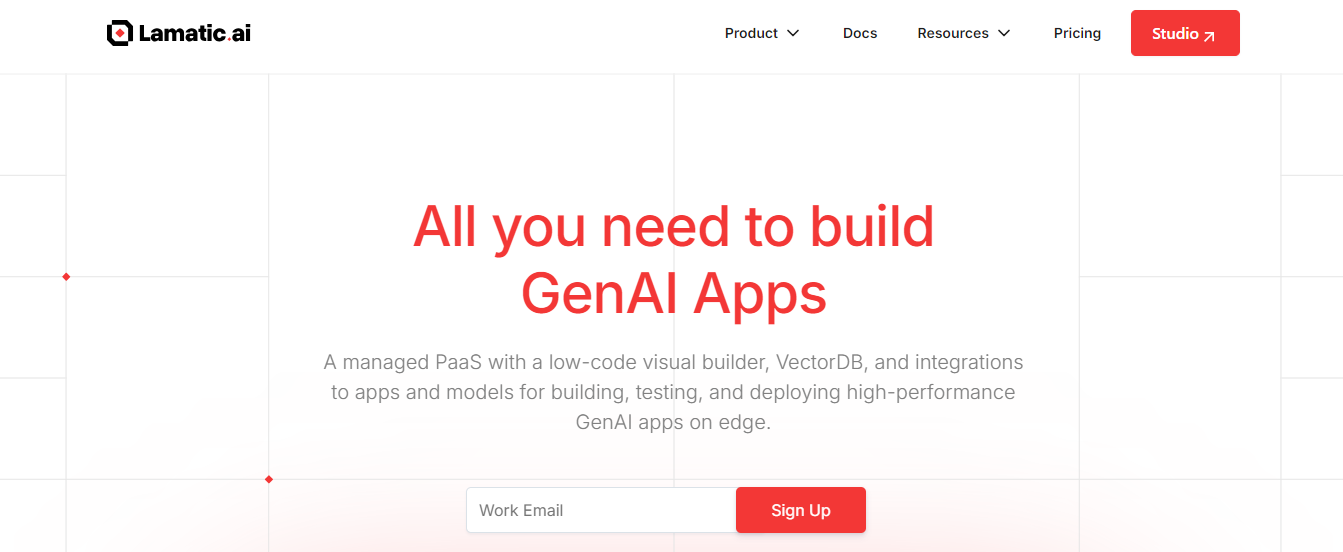
Lamatic offers a managed Generative AI tech stack that includes:
- Managed GenAI Middleware
- Custom GenAI API (GraphQL)
- Low-Code Agent Builder
- Automated GenAI Workflow (CI/CD)
- GenOps (DevOps for GenAI)
- Edge Deployment via Cloudflare Workers
- Integrated Vector Database (Weaviate)
Lamatic empowers teams to rapidly implement GenAI solutions without accruing tech debt. Our platform automates workflows and ensures production-grade deployment on edge, enabling fast, efficient GenAI integration for products needing swift AI capabilities.
Start building GenAI apps for free today with our managed generative AI tech stack.
2. Google Cloud Natural Language AI: The API for Smart Applications

Google Cloud Natural Language AI is designed to help developers build innovative applications. This AI API can perform speech and image recognition, predictive analysis, and natural language processing. Its AutoML feature allows users to train machine-learning custom models without writing a single line of code.
You can use Vertex AI for natural language to detect, expertise, and classify sentiment with minimal effort. It can be used in media, entertainment, e-commerce, healthcare, and life sciences industries.
In healthcare, for instance, it can analyze unstructured medical text and gain real-time insights. Using the AutoML Entity Extraction, you can build custom knowledge extraction models for life sciences and healthcare apps. You can also apply NLP to applications with Natural Language API.
3. AWS AI Services: Purpose-Built AI Services for Accelerated Performance
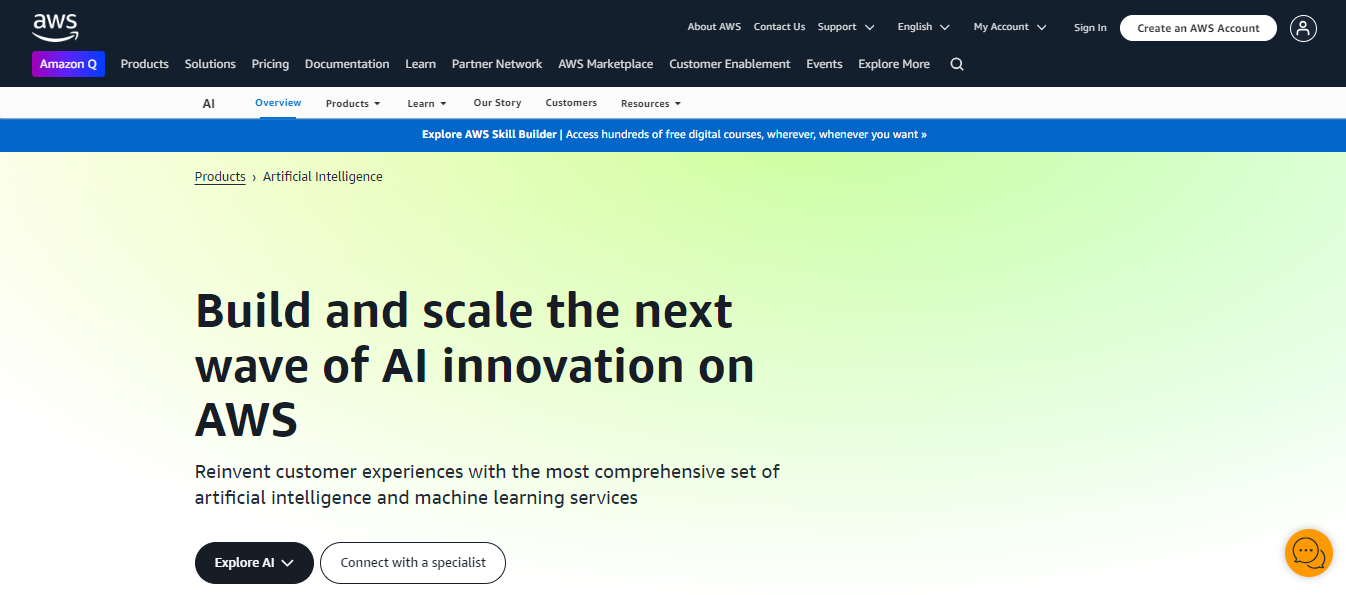
AWS AI services offer purpose-built AI services for documents, vision, and speech. You can use AWS pre-trained AI services to address standard use cases like modernizing your contact center, increasing customer engagement, making personalized recommendations, and improving safety and security.
AWS has several AI APIs, such as:
- Amazon Q, a generative AI assistant you can tailor for your business.
- Amazon Bedrock for building and scaling applications with FMs, LLMs, and generative AI tools.
- Amazon Transcribe for converting speech to text.
- Amazon Polly for building speech-enabled products.
You can use AWS AI tools to boost employee productivity through automated report generation, code generation, and conversational search. It is also ideal for process automatization with features like data augmentation, supply chain optimization, and document processing.
4. OpenAI API: Build and Scale AI Experiences
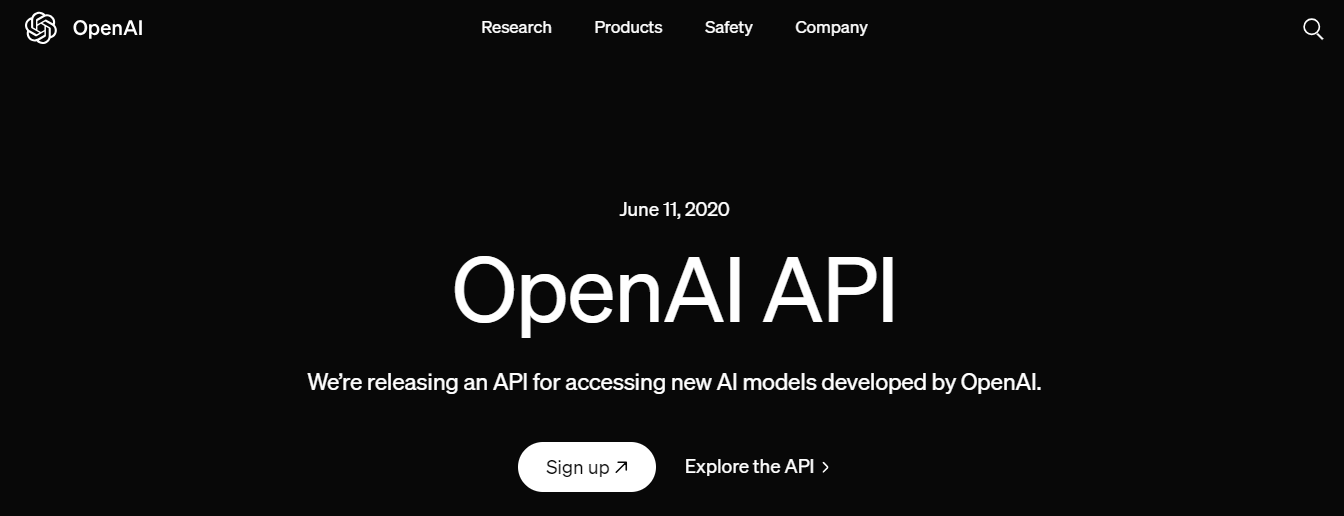
OpenAI API platform helps users build and scale AI experiences powered by industry-leading models and tools. I love OpenAI as it has several models like GPT-3.5, GPT-3.5 Turbo, GPT-4, and GPT-4 Turbo Turbo. GPTs are ideal for conversational AI, summarization, and content generation.
OpenAI also has specialized models like Codex and DALL·E Models for code-related image generation tasks. It offers various customization options. For instance, you can fine-tune models to specific use cases by feeding them with custom datasets. You can define a model’s behavior at the start of each conversation.
5. IBM Watsonx: The Next-Gen AI Platform for Business
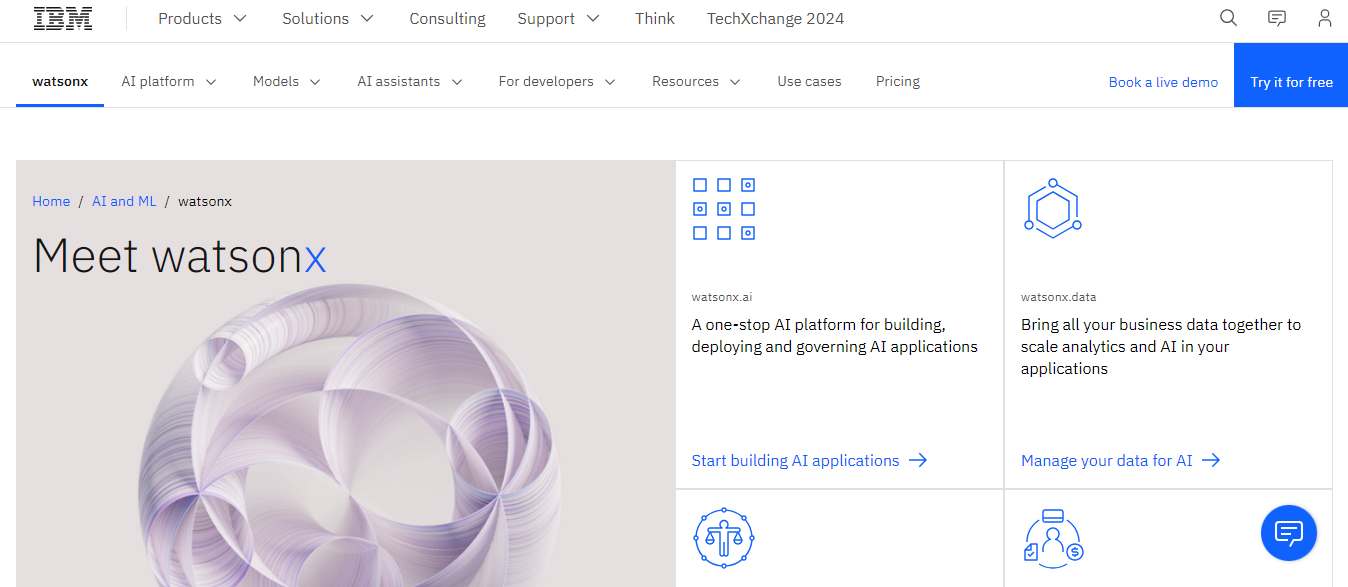
IBM Watsonx is an advanced AI platform developed by IBM and is renowned for its NLP and machine learning capabilities. The suite provides AI and data solutions and a portfolio of AI-powered assistants. Watsonx has the following products:
- Watsonx.ai: An AI platform for building, governing, and deploying AI applications.
- Watsonx.data: A platform to manage all data used by artificial intelligence apps.
- Watsonx.governance: A platform to govern, monitor, and manage all your AI models and applications.
- Watsonx Assistant: A pre-built app for building and deploying AI customer care assistants.
Watsonx is based on open technologies, so the models can be customized to fit varying use cases. The products also target IT operations, HR, and customer services domains. All the models are created with governance, transparency, and responsibility principles to help users manage accuracy and ethical concerns.
6. Replicate: The Open-Source Model API

Replicate is an API for fine-tuning and running open-source models. It generates music, images, speech, and text with a single line of code. It is handy for captioning or restoring images. It has thousands of ready-to-use open-source models from a community of AI enthusiasts and professionals.
You can also fine-tune these open-source models with your data to make them suit specific tasks. For instance, you can use Flux, an image model, to generate images of a particular style, object, or person.
Replicate does not limit you to the available open-source models. You can use Cog to deploy and package custom machine-learning models at scale. It generates an API server and deploys your custom model in a big cluster in the cloud.
7. Azure AI Services: Integrate AI Into Your Workloads
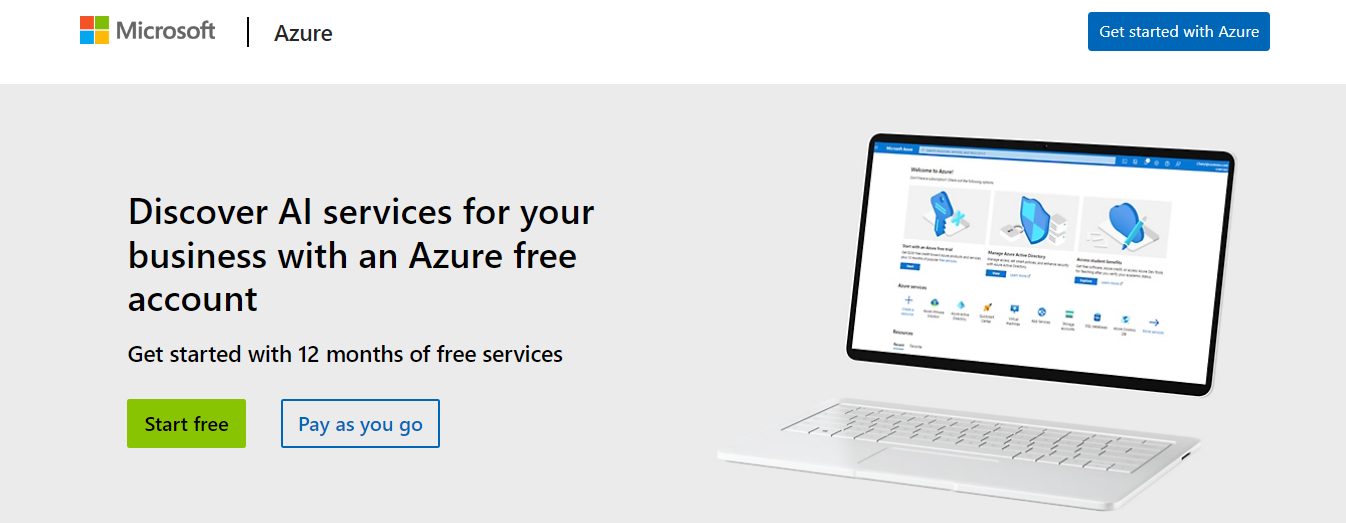
Azure AI Services gives users access to APIs of AI models from big names in the artificial intelligence space, such as Microsoft, OpenAI, Meta, and Cohere. It allows you to add generative AI features to production workloads using APIs, SDKs, and studios.
Azure AI Services has several APIs and models like:
- Phi-3 open models for building small language models.
- Azure AI Search retrieves relevant data using hybrid search, vector, or relevant keywords.
- Azure OpenAI Service for building custom copilots.
- Azure AI Translator for language detection and translating texts into over 100 images.
- Azure AI Content Safety monitors images and text to detect inappropriate or offensive content.
You can trust the AI products you create using this API as it features enterprise-grade Azure security, and responsible AI tooling is built-in.
8. AssemblyAI: The Speech-to-Text API
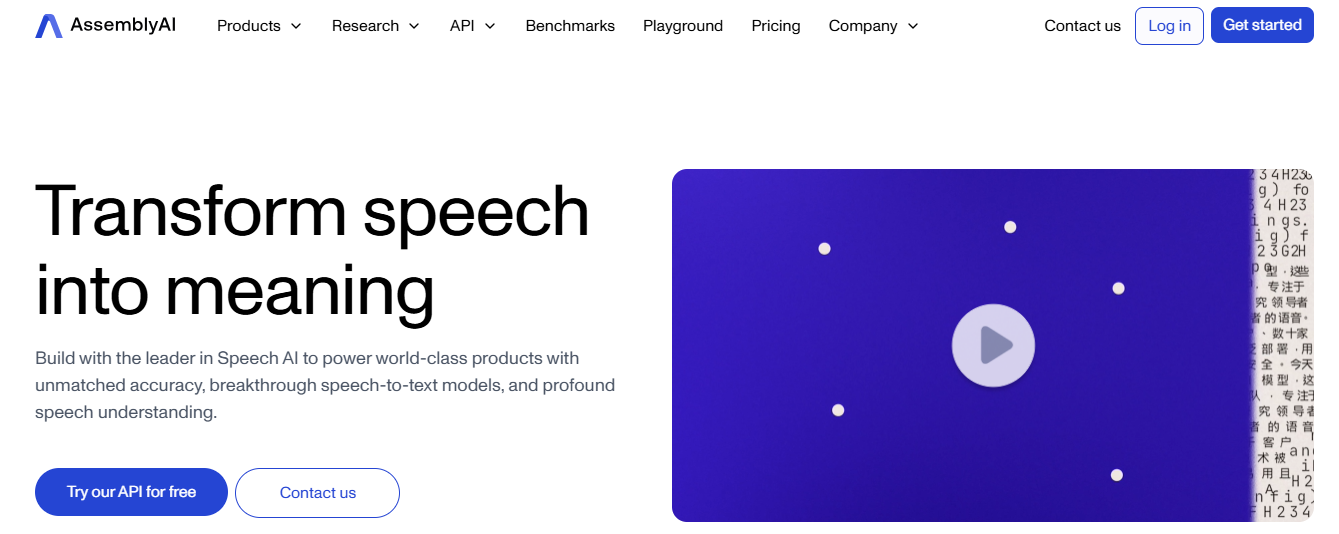
AssemblyAI is a speech-to-text AI API that converts speech into text. It offers advanced features, like language detection, to produce accurate transcriptions. With its low-latency voice recognition technology, you can get real-time transcripts and captions during live streaming. It extracts valuable insights from the text you are playing using its sophisticated audio intelligence models.
AssemblyAI has detailed technical tutorials to help you get started and perform simple and complex extractions. For example, you can generate text from an audio file in just five lines of code. The platform supports programming languages like:
- Python
- TypeScript
- Go
- Java
- C#
- Ruby
Its SDKs are designed to be performant and scalable as your computing needs rise.
9. Tavus: The Immersive Video Experience API

Tavus is an API for building immersive AI-generated video experiences in your application. You can use simple API calls to generate videos at a scale that you can use on various fronts, like marketing or brand positioning.
Training the models is simple: You must submit about two minutes of video footage, and the model will train your digital replica. The platform has in-house models that deliver life-like replicas.
Tavus is available in over 30 languages, so you can generate videos in foreign languages using your real voice. You can bring recorded audio or use the default TTS to create videos. You can include a background to the video you generate to suit your brand. Its videos can be used in:
- Tutorials
- Social media marketing
- Customer education
- Sales videos
- Many more
10. AI/ML API: Access 200 AI Models Through One API
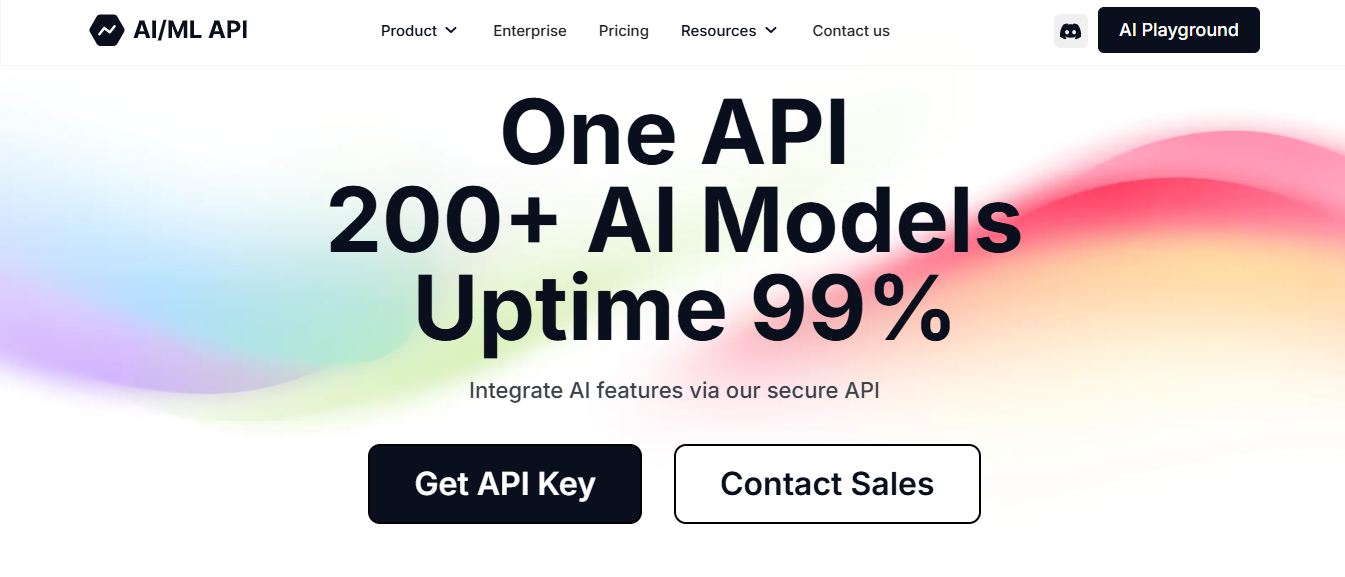
AI/ML API allows users to access over 200 AI models through a single API. This API caters to different AI needs like language processing, chatbots, embedding applications, and image recognition, as it has access to diverse models like Realistic Vision, LLaMA, Stable Diffusion, and Mixtral AI.
AI/ML API has a Serverless Inference feature, which is useful as I can integrate AI machine learning capabilities and features into various applications without complex setups and maintenance. It is also highly compatible with OpenAI’s API structure to ensure a smooth transition for users already utilizing OpenAI tools.
11. ModelsLab: The API for Next-Gen AI Products

ModelsLab is an API for building next-generation AI products without worrying about GPUs. Develop conversational AI systems without restrictions found in most platforms. This API promotes open communication and is proper for domain-specific and creative spaces.
The uncensored nature ensures developers can work on personalized conversations without worrying about explicit content or automatic content filtering. This feature gives AI creators more freedom and control in shaping conversations. Using Stable Diffusion and Flux models, you can turn your ideas into impressive visuals by typing human language prompts.
ModelsLab allows you to train custom Dreambooth models using custom images. You can also use LoRA to fine-tune the model with a few photos. To integrate your custom model with your application, send an API request with a prompt.
12. Clarifai: The Full-Stack AI Platform

Clarifai is a full-stack AI platform for developers. It has a suite of APIs that tackles data labelling, NLP, and computer vision. Its computer vision pre-trained models allow it the tool to do:
- Facial recognition
- Image classification
- Scene analysis
- Object recognition
Users can use the pre-trained models to interpret visual data or develop custom models if they are looking for tailored solutions.
Clarifai uses NLP to extract meaningful insights from text. Thus, developers can quickly analyze textual data as the tool can do text categorization, entity recognition, and sentiment analysis. Clarifai’s annotation features are handy for developers and businesses that want to label data. The tool accelerates workflows by utilizing AI capabilities to automate data labeling.
13. Hugging Face: The Open-Source AI Community
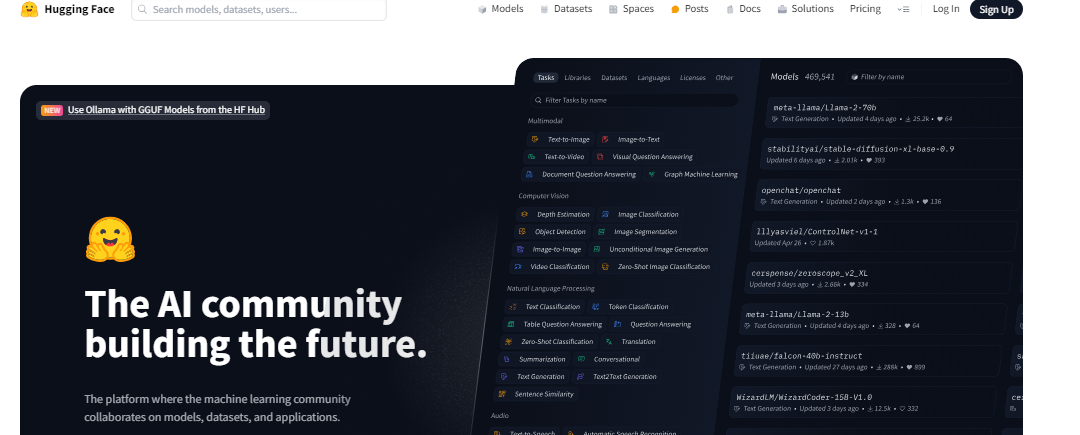
Hugging Face is a leading US-based company in artificial intelligence, known for its platform that enables easy deployment and use of open-source machine learning models.
The Serverless Inference API offers a comprehensive suite of features, including access to over 150,000 pre-trained models for a wide range of AI tasks, uploading and managing custom models, and accelerated inference for improved performance.
The API provides a plug-and-play solution for integrating natural language processing, computer vision, and audio models into applications, allowing businesses to harness the power of machine learning without the complexities of MLOps.
14. DeepL: The Translation API
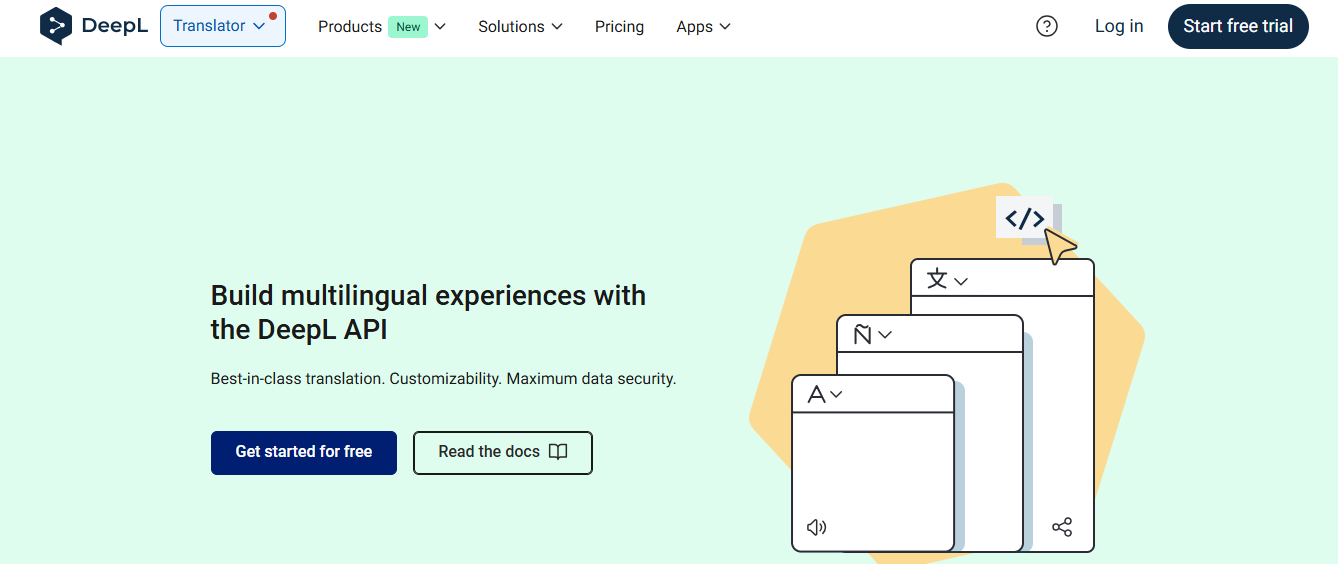
DeepL, a German-based company, is a world leader in machine translation and is known for its powerful online translator and API. The DeepL API provides programmatic access to the company's advanced neural machine translation technology, enabling developers to integrate high-quality translation capabilities into their seamlessly:
- Websites
- Applications
- Enterprise systems
The API supports various use cases, including website localization, global team communication, and building multilingual products. It allows users to translate text and documents in multiple formats, with the ability to scale and maintain data security.
The API has been integrated into leading computer-assisted translation (CAT) tools, empowering translators to leverage DeepL's state-of-the-art neural translations within their preferred workflow.
15. Anthropic: The AI Safety Startup

Anthropic is a startup focused on AI safety and research, aiming to create trustworthy, interpretable, and steerable AI systems. Their API, featuring Claude, is designed to integrate sophisticated dialogue and creative content generation into any application.
Claude excels at various tasks, from generating detailed instructions to engaging in complex reasoning and thoughtful dialogue. The API is designed to be helpful, honest, and harmless, making it suitable for various applications.
16. Cohere: Advanced NLP Models
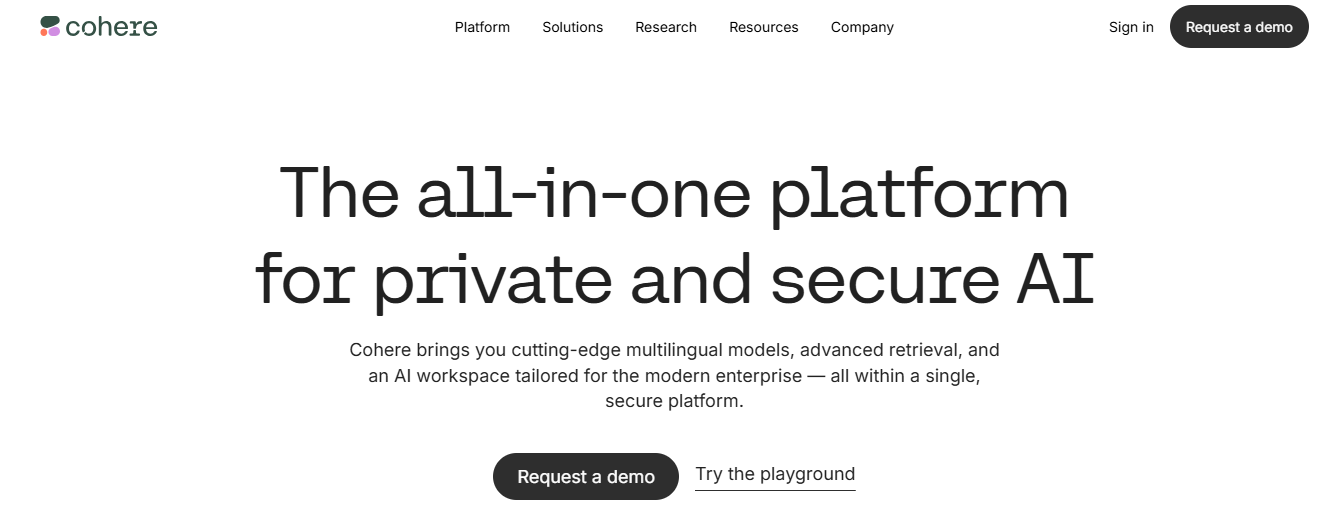
Cohere is a Canadian company that offers access to advanced Large Language Models and NLP tools. It provides APIs for advanced text generation and natural language processing. Their models can automate:
- Content creation
- Summarization
- Classification tasks
The platform offers high-quality text generation and is well-suited for natural language interaction applications.
17. TensorFlow: The Open-Source Machine Learning Framework
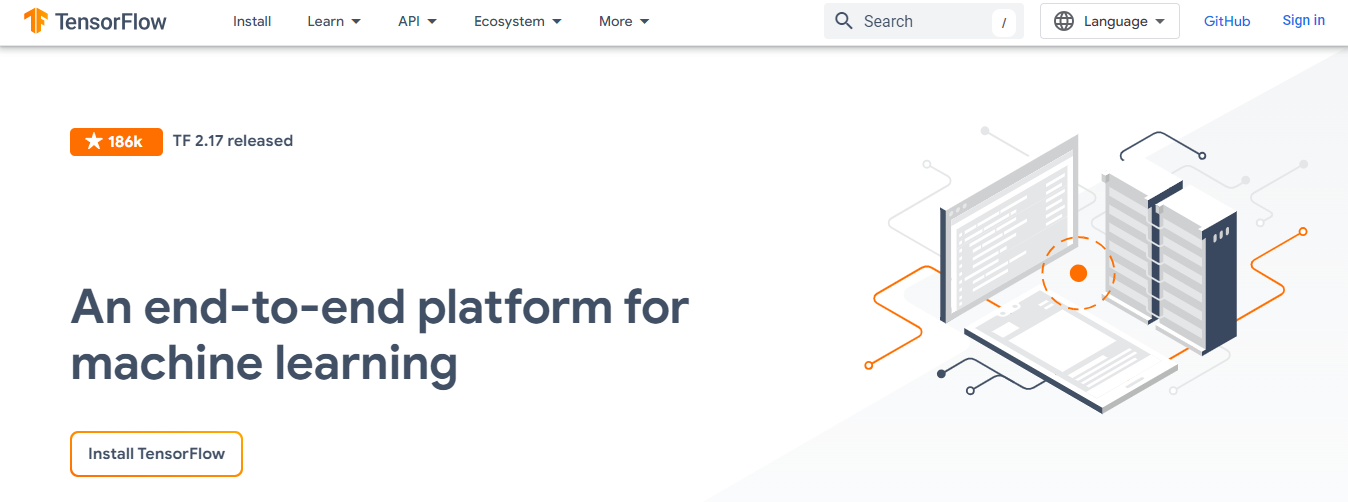
TensorFlow is an open-source machine learning framework developed by Google. It provides a range of APIs for different AI tasks, including image and video analysis, text analysis, and natural language processing.
TensorFlow is highly flexible and scalable and is used by many businesses and organizations to build AI models.
Related Reading
- List of Generative AI Tools
- Create Your Own AI Application
- Generative AI Applications
- How to Build AI Software
- ChatGPT Integration Services
- Custom ChatGPT Integration Services
- AI Integration Services
- AI Integration Strategies
- AI Integration Tools
- Best AI APIs
- Benefits of APIs
What to Look for in a Generative AI API

Generative AI APIs can deliver a variety of functions, from natural language processing to image generation and analysis. Start your selection process by evaluating the unique capabilities of each API.
Consider the type of AI functionality your project necessitates, such as natural language processing or image and video analysis. Ensure the API you choose can deliver the necessary features.
Seamless Integration With Current Systems Is a Must
Integration is another crucial factor. A seamless integration process with your current system or application is essential. Look for APIs with comprehensive documentation and extensive support for popular programming languages and frameworks. That way, you can cut down on the time spent on the integration process and get to building your application.
Don’t Forget to Consider Pricing Structures
Consider the pricing structure. Evaluate the long-term costs involved, including any usage limits or additional fees. This will help you avoid surprise charges as you scale your application. Also, remember that the best AI API for your project depends on your specific needs and objectives.
Testing out multiple APIs can help determine which delivers optimal performance and value for your project.
Start Building GenAI Apps for Free Today with Our Managed Generative AI Tech Stack
Lamatic offers a managed generative AI tech stack that eliminates the complexity of implementing generative AI solutions. Organizations can use our platform to build and deploy production-grade generative AI applications without accruing technical debt.
The Best Generative AI API
Lamatic's custom generative AI API offers intelligent, automated access to data and workflows for any application. Our API is built on GraphQL, an efficient and flexible alternative to REST. With GraphQL, you can query specific data instead of getting a large bundle of data and sifting through it to find what you need. This makes integration faster, more efficient, and less costly.
Low Code Tools for Fast Generative AI Development
Lamatic's low-code agent builder enables teams to create custom AI agents within a user-friendly interface. Using a simple point-and-click method, developers can quickly construct the unique workflows that power their GenAI applications. This cuts down on time-consuming coding to get GenAI solutions up and running.
Automated Workflow for Accelerated GenAI Integration
Lamatic automates generative AI workflows to eliminate the tedious processes that delay deployment. Our continuous integration and continuous deployment (CI/CD) tools provide seamless transition from development to production.
This helps teams integrate GenAI capabilities into their applications faster to deliver smarter products to users without undue delay.
GenOps: DevOps for Generative AI
GenOps is the next evolution of DevOps. As a set of practices to streamline the development and deployment of generative AI models, GenOps helps teams manage unique complexities and challenges associated with the technology. Our platform provides tools and automation to:
- Optimize operations
- Eliminate technical debt
- Accelerate integration for GenAI applications
Edge Deployment via Cloudflare Workers
Lamatic allows users to deploy generative AI applications on the edge to enhance performance and reduce latency. Our integration with Cloudflare Workers makes it easy to deploy your applications across a global network of servers. This ensures users get the best performance from your generative AI application, regardless of location.
Integrated Vector Database
Lamatic features an integrated vector database to help teams get up and running quickly. With Weaviate, you can store and organize vector embeddings to optimize your GenAI applications. Our platform provides out-of-the-box functionality to streamline operations and reduce the time it takes to deploy your application.





